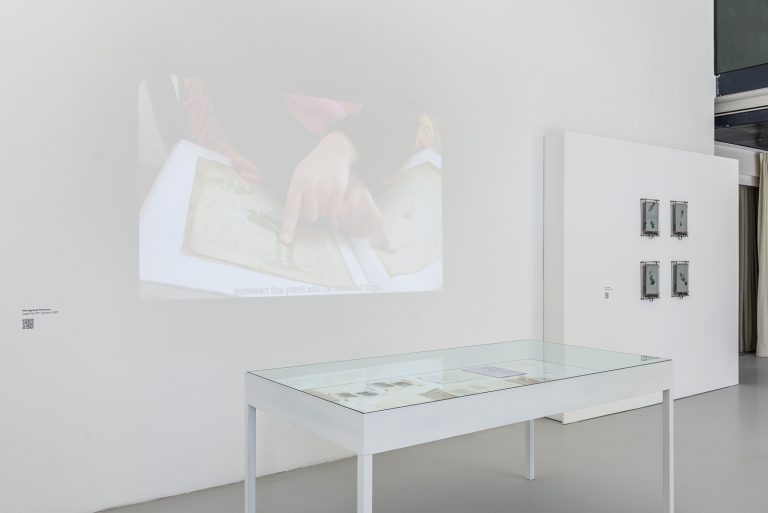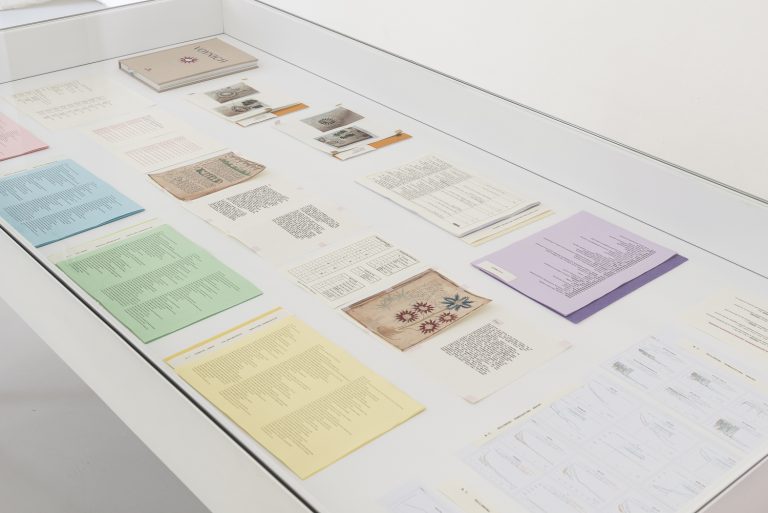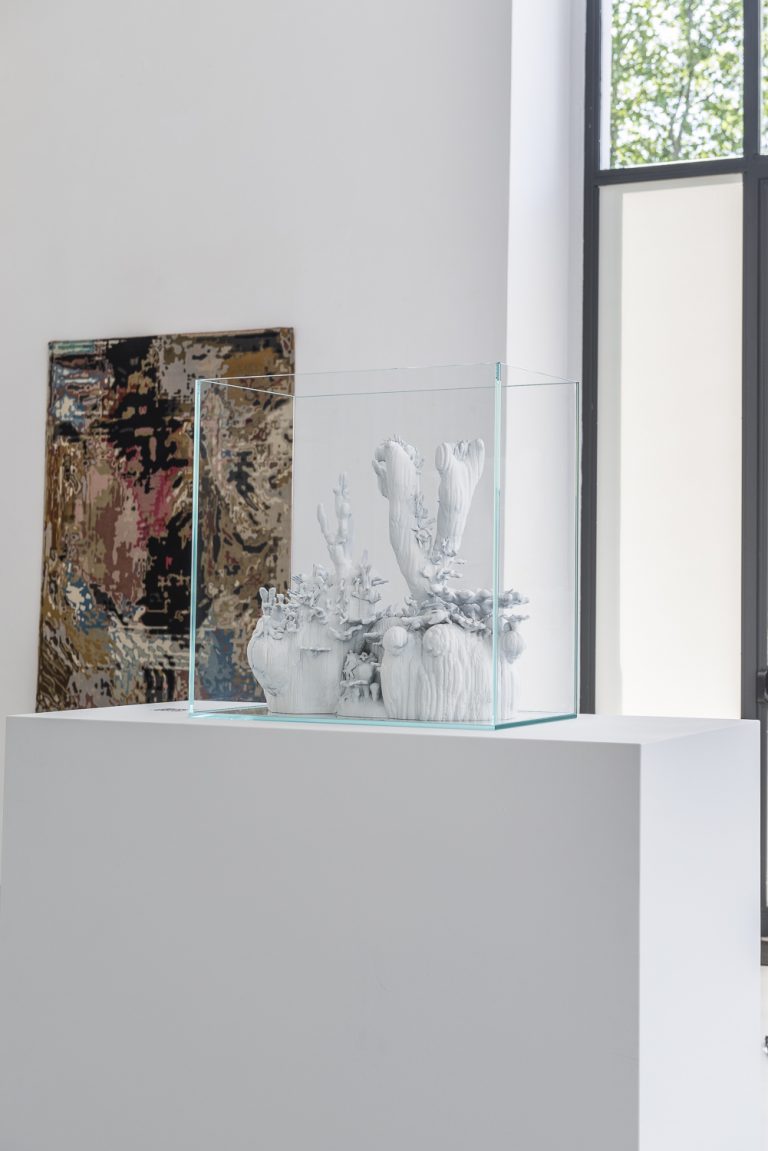Daniela Cotimbo
Art Curator
- Home
- About
- Re:Humanism
- Exhibitions
- OVERTON WINDOW: Solo
- Muovendomi, stando ferma.
- Second Order Reality
- The Stone Monkey
- Tecnoriti
- Sparks and Frictions Re:humanism #3
- Beyond Binaries
- Distrust Everything
- IperSitu
- Non sono io il fotografo
- Object Oriented Choreography
- Don’t you forget about me
- Re:define the boundaries Re:humanism #2
- Within a latent space
- Allegra ma non troppo
- Complessità
- Re:humanism art prize #1
- Ionian Archaeological Archives
- Die andere Seite
- Models of display
- Se non vedete segni o prodigi non credete affatto
- CsO
- ANDIAMO Là
- Talk
- Publications
- News
- Contact
Re: define the boundaries
Re:humanism #2

Re:humanism #2 – Re: define the boundaries
5-30.05.2021
Collective exhibition
Curated by Daniela Cotimbo
of the 10 winners of Re:Humanism Art Prize 2
MAXXI – National Museum of 21st Century Art, Rome
Re:Humanism 2 manifests itself after the decision of many governments to ban surveillance and facial recognition technologies and a growing movement for the assertion of the rights of minorities and all marginalized categories. Behind the promise of developing ethical algorithms, lies the danger of a crystallization of these principles that are fluid matter, subject to different mutations. Finally, the second edition leaves the field open to visionary explorations on the developments of machine learning, robotics, and computer vision technologies. The great questions on which the human being has been projecting dreams and fears for centuries come back; the image of an autonomous consciousness capable of replacing many of the activities so far prerogative of the human is not only a science fiction plot, but it represents a tangible possibility that once again pushes us to question ourselves on how to rethink our future in relation to work and to life organization.
What has happened in these two years is a strong awareness of how behind the fear of being replaced by thinking machines and the consequent promise of emancipation from alien work, once again lie low-cost jobs, often assigned to disadvantaged groups whose new activities are no less degraded than those they have replaced. However, the gaze of the machine continues to fascinate artists who use neural networks’ potential to inform the future and to generate tools useful for sociality and sustainability. Through the GAN (Generative Adversarial Network) a new aesthetic is taking hold, increasingly present in new cultural scenarios, from music to cinema, from television to contemporary art. It is precisely in this latter context that we are witnessing the gradual establishment of such technologies, previously used only as a function of a semiotic analysis of the medium, now used pursuant to the transmission of a message and in response to changes in society. Art reflects on the concept of interface, bringing it to its extreme consequences, sometimes enhancing its aesthetics, other times hiding it behind different levels of reading. This second edition of Re:Humanism stems precisely from the awareness that systemic mutations due to AI technologies are not material for nostalgic ruminations, on the contrary, they represent phenomena to be read in all their radical complexity as an opportunity to question some of the acquired categories that concern our very human being. Artists use a speculative approach that sees in technology and its impacts the potential for a re-appropriation of methods and processes to imagine new possible trajectories.
The speculations about the future of the planet (and its inhabitants) are the protagonists of this edition, declined through multiple gazes.
The Entangled Others with Beneath the neural waves 2.0, indeed, invite us to rethink the coexistence on the planet through the study of complex ecosystems such as those of coral reefs and through the use of a neural network. New interweaving of species is articulated within this aquarium whose alien features invite us to imagine new symbiosis between species, bringing to the attention of the public the capacity of natural ecosystems to generate forms of coexistence economically and socially beneficial for all their components. Irene Fenara in Three Thousand Tigers relates the phenomenon of the extinction of tigers with the idea of their digital preservation. However, three thousand tigers (currently estimated number of actual specimens still in existence) represent a small number for the composition of a dataset for the machine learning system training. This quantitative difference conceals the profound distinction between an epistemological datum and the linguistic universe that accompanies it. Precisely the fascination with this majestic animal has progressively involved its elimination, to the point that the artist chooses to transform the results of this path into a series of precious tapestries made by Indian craftsmen that testify as human intervention has a direct role in the gradual disappearance of this animal. Yuguang Zhang’s work, (Non-)Human: The Moving Bedsheet, is a delicate reflection on the relationship that binds us to everyday objects, with many of them we interact directly as when we rub our face on a towel or we abandon ourselves on a bed, taking different poses, thus creating an intimate relationship with the object. Through a dataset of images of the poses taken during sleep, the artist trains a neural network to generate further articulations in space and then transmit these movements directly to the surface of the bed itself. Following an imaginary animist, the artist associates the properly human movement to the object, trying to move between that fine line that distinguishes man from artifice, the form of life from inorganic matter and thus embodying that concept of anthropology of artificial intelligence that the most recent studies aim to outline. Upon the fine line between human and artificial existence is also Carola Bonfili’s work, that in The FluteSinging uses literary suggestions from the texts of Ovid’s Metamorphoses to train a GPT system of generating texts to produce an artificial script, within whose virtual scenario a creature with alien features lives and moves, questioning its own consciousness. The work, entirely realized in CGI (computer-generated imagery), alludes to a not very distant future in which artificial simulations will represent autonomous forms of existence but at the same time invites us to reflect on the creative potential of narrative languages, identifying technology as an effective tool to expand the boundaries of such narratives, bringing back to the virtual dimension some feelings of estrangement proper to the human experience. The project of the collective Numero Cromatico, which has long been involved in creating a bridge between neuroscientific discoveries and the ways in which works of art are used and assimilated, is also at the base of literary suggestions. Epitaphs For The Human Artist was developed from the study of the poetic language contained in the epitaphs, spontaneous community forms of production of a deceased memory, to train a neural network to the automatic generation of such texts. Often difficult to understand, these compositions highlight their artificial nature, without referent. The words contained in these texts, randomly associated with different colors, seem to prevail over the compositional structure, opening as links or windows to new possible interpretative scenarios. The work that provocatively alludes to the death of the human artist, makes us reflect on the creative potential of these technologies and at the same time emphasizes the impossibility of adherence to a structure of meaning based on experience. Egor Kraft’s work, Chinese Ink, also stems from the analysis of a traditional creative language like that of ancient Chinese painting which, deprived of its figurative subjects, is used to train a GAN to produce a dozen images per second, which also simulate the effect of ink on blotting paper in gestures. Through this technological expedient the artist animates this traditional technique and invites us to reflect upon how these traditions survive and change with the advancement of technological progress. Mariagrazia Pontorno in Super Hu.Fo* Voynich engages in the utopian and visionary attempt to translate the ancient Voynich code, a small manuscript attributed to the fifteenth century, whose interpretation has been object of interest for many scholars including Alan Turing. Through the neural networks, Pontorno identifies forms of relevance between the mysterious and fascinating illustrations contained in the text and the recurrence of characters that reveal esoteric approaches to nature and the creatures that inhabit it. AI intervention, although present in the work, is distorted by some free interpretations that the artist chooses to include in the training dataset in order to obtain a hybrid translation, the result of the collaboration between natural and artificial language. The work of the duo Christoforetti-El Sayah, starts from the Renaissance architectural tradition and the treatises of Leon Battista Alberti to reconfigure the individual as an integral part of the concept of contemporary urbanism. In Body As Building machine learning is used by the two artists to capture the faces of the spectators and merge them with images of modern architecture proposing a new horizontal approach to the phenomenon of construction and creating a parallel between the concept of body and that of home as forms of contemporary living. The body also relates with the work of the collective Umanesimo Artificiale, whose research starts from the biographical data, a genetic alteration of the DNA (in particular the ABCD1 gene) from which is affected one of the group’s members and which manifests as a neurological disease. The artists decide to translate this complex alteration in sound with the help of AI algorithms. The result are two complex 3D-printed sculptures in which “healthy” and “mutated” DNA are articulated in space by emitting different sound frequencies. The work represents a sophisticated and significant experience of data visualization but also pushes us to rethink the categories of health and disease by offering all the power and variety of the manifestations of nature. Lastly, bodies and different forms of sexuality animate the work of Johanna Bruckner who in Molecular Sex investigates the new modalities of interspecies relationship that, based mainly on the theories of Karen Barad, represent new possible approaches to ecological complexity. The American scholar sees in quantum matter a changeable and performative approach equal to that of queer categories that identify bodies and gender identities. By multiplying points of view and manifesting hybrid forms of desire, Bruckner invites us to open ourselves to new approaches to the body, identity, and desire, using artificial intelligence as a tool to amplify imaginative potential throughout learning and simulation.
























